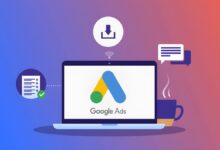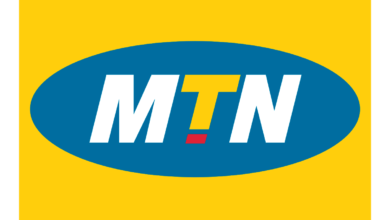How to Advertise with Google Ads: A Beginner’s Guide to Advertising on Google

Google Ads continues to be a powerful and popular tool for businesses of all sizes to reach their target audience and increase their online sales. However, for those new to the platform, it can be overwhelming and confusing. With so many features and settings, it can be challenging to know where to begin. That’s why we have created this beginner’s guide to Google Ads – to help you unlock the power of this advertising platform. In this guide, we’ll cover everything from setting up your account and creating your first campaign to targeting your audience and measuring your results. Whether you’re a small business owner looking to increase your online presence or a marketing professional wanting to stay ahead of the game, this guide will provide you with the knowledge and tools you need to succeed with Google Ads.
Why Google Ads Natter for Your Business
Google Ads, formerly known as Google AdWords, is a powerful advertising platform that provides businesses with a unique opportunity to reach their target audience. With over 246 million unique visitors in the United States alone, Google is undoubtedly the most popular search engine in the world. By utilizing Google Ads, businesses can place their products and services right in front of potential customers who are actively searching for them.
In today’s digital age, it’s essential for businesses to have an online presence. Google Ads can help businesses of all sizes to achieve their online marketing objectives, ranging from increasing website traffic to generating leads and sales.
One of the most significant advantages of using Google Ads is that it allows businesses to target their ads to specific audiences, based on factors such as location, language, device, and user behavior. This level of targeting ensures that the right audience sees the ad at the right time, increasing the likelihood of conversion.
Furthermore, with Google Ads, businesses only pay when someone clicks on their ad, making it a cost-effective way to reach a larger audience and drive traffic to their website. In short, Google Ads matter for your business because they provide a powerful digital advertising platform that can help you reach your target audience, increase website traffic, generate leads, and ultimately drive sales.
Understanding Google Ads
Google Ads is an incredibly powerful tool for businesses of all sizes, allowing you to place your ads in front of potential customers who are actively searching for the products or services you offer. Understanding how Google Ads works is key to unlocking its full potential and making the most of your advertising budget.
Learn More About Google Ads: Understand Google Ads From Keyword Research to Ad Creation.
At its core, Google Ads works by allowing you to bid on specific keywords that are relevant to your business. When someone searches for those keywords on Google, your ad will appear at the top of the search results page, above the organic (unpaid) search results. You only pay when someone clicks on your ad, which is why Google Ads is often referred to as “pay-per-click” advertising.
Another important aspect of Google Ads is targeting. You can target your ads by geographic location, language, device, and even time of day. This allows you to reach the right people at the right time with the right message. For example, if you run a local pizza restaurant, you could target your ads to people who are searching for “pizza delivery” in your local area.
Google Ads also offers a range of ad formats, including text ads, image ads, and video ads, which can be displayed on Google search results pages, on other websites that are part of the Google Display Network, and even on YouTube.
Ultimately, understanding how Google Ads works is just the first step in creating effective advertising campaigns. To truly unlock its power, you need to focus on creating compelling ads, choosing the right keywords, and continually optimizing your campaigns to improve your return on investment.
The Different Types of Google Ads Campaigns
There are several types of Google Ads campaigns to choose from, each suited for different business goals and advertising budgets. Here are the main types of Google Ads campaigns:
1. Search Ads
These are text-based ads that appear at the top or bottom of Google search results when someone searches for a specific keyword related to your business.
2. Display Ads
These are visual ads that appear on websites and apps that are part of Google’s Display Network. They can be in various formats such as images, videos, or interactive ads.
3. Video Ads
These are ads that appear before, during, or after YouTube videos, or in other video partner websites. They can be in various formats, including in-stream ads, video discovery ads, bumper ads, and more.
4. Shopping Ads
These are ads that appear on Google Shopping when someone searches for a specific product related to your business. They include product information like an image, title, price, and store name.
5. App Ads
These are ads that promote your app across Google’s network, including Google search, YouTube, and the Google Play store.

Choosing the right type(s) of Google Ads campaigns depends on your business goals, target audience, and available advertising budget. By understanding the different types of campaigns available, you can create a Google Ads strategy that helps you reach your desired audience effectively and efficiently.
How to Set Up a Google Ads Account
Setting up a Google Ads account is a relatively simple process that can be done in just a few steps.
- The first step is to visit the Google Ads website and click on the “Start Now” button.
- From there, you will be prompted to sign in to your Google account or create a new one if you don’t already have one.
- Once you’ve signed in, you’ll be taken to the Google Ads dashboard where you can create your first campaign. You will need to provide some basic information about your business, such as your website URL, location, and contact information.
- Next, you’ll need to choose your campaign type and set your budget. Google Ads offers several different campaign types, including search ads, display ads, and video ads. Each type has its own unique settings and targeting options, so it’s important to choose the one that best suits your business goals.
- After choosing your campaign type, you’ll need to select your target audience and choose your keywords. This is where you’ll need to do some research to determine what keywords your potential customers are using to find businesses like yours. Google Ads provides a keyword research tool that can help you find the right keywords to target.
- Finally, you’ll need to create your ad. Google Ads offers a variety of ad formats, including text ads, image ads, and video ads. You’ll need to choose the format that best suits your business and create a compelling ad that will catch the attention of your target audience.

Overall, setting up a Google Ads account is a straightforward process that can be done in just a few steps. However, it’s important to take the time to do your research and choose the right campaign type, keywords, and ad format to ensure the success of your advertising campaign.
How to Create a Google Ads Campaign
Creating a Google Ads campaign may seem daunting, but it’s actually a straightforward process. Here’s how you can get started:
- Sign in to your Google Ads account and click on the “Campaigns” tab.
- Click the blue plus button to create a new campaign.
- Choose your campaign type. Google Ads offers several campaign types, such as search, display, shopping, and video campaigns as mentioned above.
- Select the campaign subtype. For example, if you choose a search campaign, you can select whether you want to show your ads on Google search or Google search partners.
- Set your campaign goals. Google Ads offers several campaign goals, such as sales, leads, website traffic, and brand awareness.
- Set your budget and bids. You can set a daily budget for your campaign and also set bids for your keywords.
- Choose your targeting options. You can target your ads by location, language, demographics, and more.
- Create your ad groups. An ad group contains a set of ads and keywords.
- Create your ads. You can choose from several ad formats, such as text ads, responsive ads, and image ads.
- Choose your keywords. You can choose keywords that are relevant to your business and that people are searching for on Google.
- Once you’ve created your campaign, you can monitor its performance and make adjustments as needed.

Google Ads provides detailed reports that show you how your ads are performing and where your budget is being spent. With a well-crafted Google Ads campaign, you can reach your target audience and drive more traffic, leads, and sales to your website.
How to Choose The Right Keywords for Your Campaign
When it comes to Google Ads, choosing the right keywords for your campaign is crucial. The success of your campaign will depend on it. The first thing you need to do is identify the keywords that are relevant to your business or product. Think about what your customers might be searching for when they’re looking for a product or service like yours.
You can use Google’s Keyword Planner tool to research potential keywords. This tool will help you find popular keywords related to your business and provide you with insights on their search volume and competition level.
It’s important to choose keywords that are relevant to your business and have a high search volume but low competition. This will give you an edge over your competitors and help you get more clicks on your ad.
Another important factor to consider is the intent behind the keywords. Are your customers looking for information or are they ready to buy? Understanding the intent behind the keywords will help you create ads that are more targeted and effective.
Finally, make sure to continuously monitor and refine your keywords. Keep track of which keywords are performing well and which ones are not. This will help you optimize your campaign and get the most out of your advertising budget.
How To Write Effective ad Copy
When it comes to writing ad copy for your Google Ads, it’s important to keep in mind that you have limited space to grab the attention of your audience. Therefore, your ad copy must be concise, compelling, and relevant to the user’s search intent.
- Firstly, ensure that your headline is attention-grabbing and incorporates the main keyword you are targeting. It should be clear and concise, giving the user an idea of what your ad is all about.
- Secondly, utilize the description lines to highlight the benefits of your product or service. Be sure to differentiate yourself from your competitors and emphasize what makes you unique.
- Thirdly, include a strong call-to-action that encourages the user to take action, such as “Sign up now” or “Get a free trial”.
- Lastly, make sure your ad copy is relevant to the landing page you are directing users to. Avoid making false promises or misleading claims, as this will only lead to a high bounce rate and a low conversion rate.

Remember, your ad copy is the first impression your potential customers will have of your brand, so make sure it’s compelling and relevant to their search intent. With effective ad copy, you can increase your click-through rate and drive more conversions to your website.
How to Set a Budget For Four Campaign
When it comes to setting a budget for your Google Ads campaign, it’s important to be realistic. You don’t want to overspend and drain your resources, but at the same time, you don’t want to set a budget that’s too low and miss out on potential customers.
To start, think about what you’re willing to spend on advertising. This will depend on your business and the size of your budget. It’s also important to consider your business goals and what you hope to achieve with your Google Ads campaign. Are you looking to increase brand awareness or generate leads? The type of goal you have in mind will play a role in determining your budget.
Once you have an idea of what you’re willing to spend, you can use Google’s keyword planner tool to estimate how much each click will cost. This will help you determine how many clicks you can afford each day and how long your campaign can run.
Another important factor to consider is the competition in your industry. If there are a lot of businesses competing for the same keywords, you may need to increase your budget to ensure your ads are seen by potential customers.
Remember to monitor your campaign regularly and adjust your budget as needed. This will ensure you’re getting the most out of your advertising dollars and maximizing your return on investment.

How to Measure The Success of Your Google Ads Campaign
Measuring the success of your Google Ads campaign is crucial to understanding how effective your ads are at driving traffic and conversions to your website. There are several key metrics that you can use to measure the success of your campaign.
Firstly, you can track the number of clicks that your ads receive. This metric is called Click-Through Rate (CTR) and it tells you how many people are clicking on your ads compared to the number of times they are being shown.
Another important metric is Cost-Per-Click (CPC), which tells you how much you are paying for each click on your ads. This is important to monitor because it can help you optimize your budget and ensure that you are getting the most value for your advertising spend.
Conversion tracking is also a crucial metric to measure the success of your campaign. This allows you to track the number of conversions that your ads are generating, whether that’s sales, leads, or other actions that you want users to take on your website.
Finally, it’s important to keep an eye on the Quality Score of your ads. This metric is a combination of factors such as ad relevance, landing page experience, and expected click-through rate. A high Quality Score can lead to better ad positioning and lower costs-per-click.
By tracking these metrics, you can gain valuable insights into the effectiveness of your Google Ads campaign and make data-driven decisions to optimize your ads for better performance.
Tips and Best Practices for Optimizing Your Google Ads Campaign
Optimizing your Google Ads campaign is crucial for achieving success and reaching your desired audience. Here are some tips and best practices to consider:
1. Set clear goals: Before launching your campaign, determine your goals. Are you looking to generate leads, increase brand awareness, or drive sales? Having clear goals will help you measure your success and optimize your campaign accordingly.
2. Choose the right keywords: Selecting the right keywords is essential for reaching your target audience. Use Google’s Keyword Planner to research and identify the most relevant and high-traffic keywords for your business.
3. Write compelling ad copy: Your ad copy should be engaging, relevant, and optimized for your keywords. Use calls-to-action and highlight your unique selling points to entice users to click on your ad.
4. Use ad extensions: Ad extensions can enhance your ad’s visibility and provide additional information to users. Consider using extensions such as sitelinks, callouts, and structured snippets to provide more details about your business.
5. Monitor and adjust your bids: Keep a close eye on your bidding strategy and adjust your bids accordingly to ensure you’re getting the most out of your budget.
6. Test and refine: Continuously test and refine your campaign to optimize performance. Experiment with different ad copy, keywords, and targeting options to see what works best for your business.
By implementing these tips and best practices, you can unlock the full potential of your Google Ads campaign and achieve your advertising goals.
We hope you enjoyed our beginner’s guide to advertising on Google. Google Ads can be a powerful tool for businesses of all sizes to increase their online visibility and drive traffic to their website. However, it can be intimidating for beginners to navigate the platform. With the tips and tricks provided in this article, we hope that you feel more confident in your ability to create effective Google Ads campaigns and succeed in your online advertising efforts. Now it’s time to get to work and unlock the power of Google Ads for your business!













